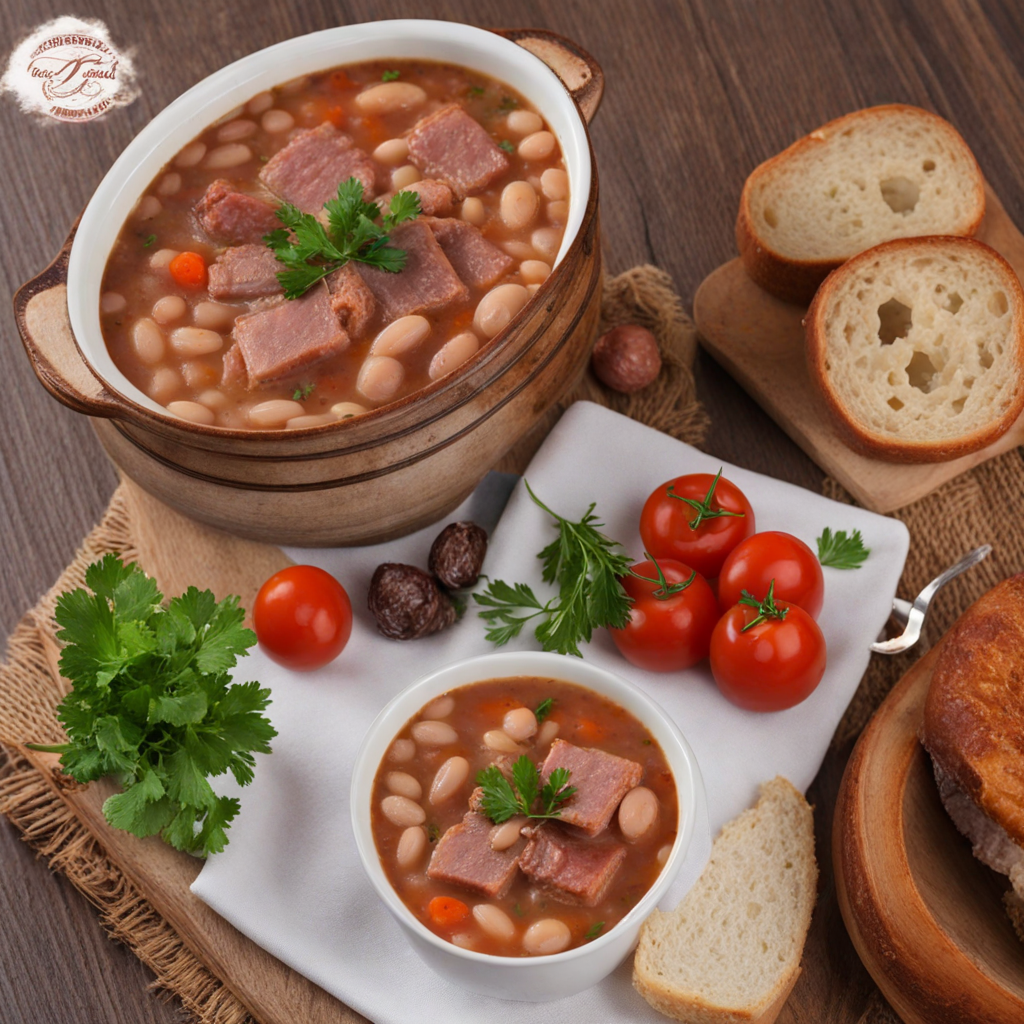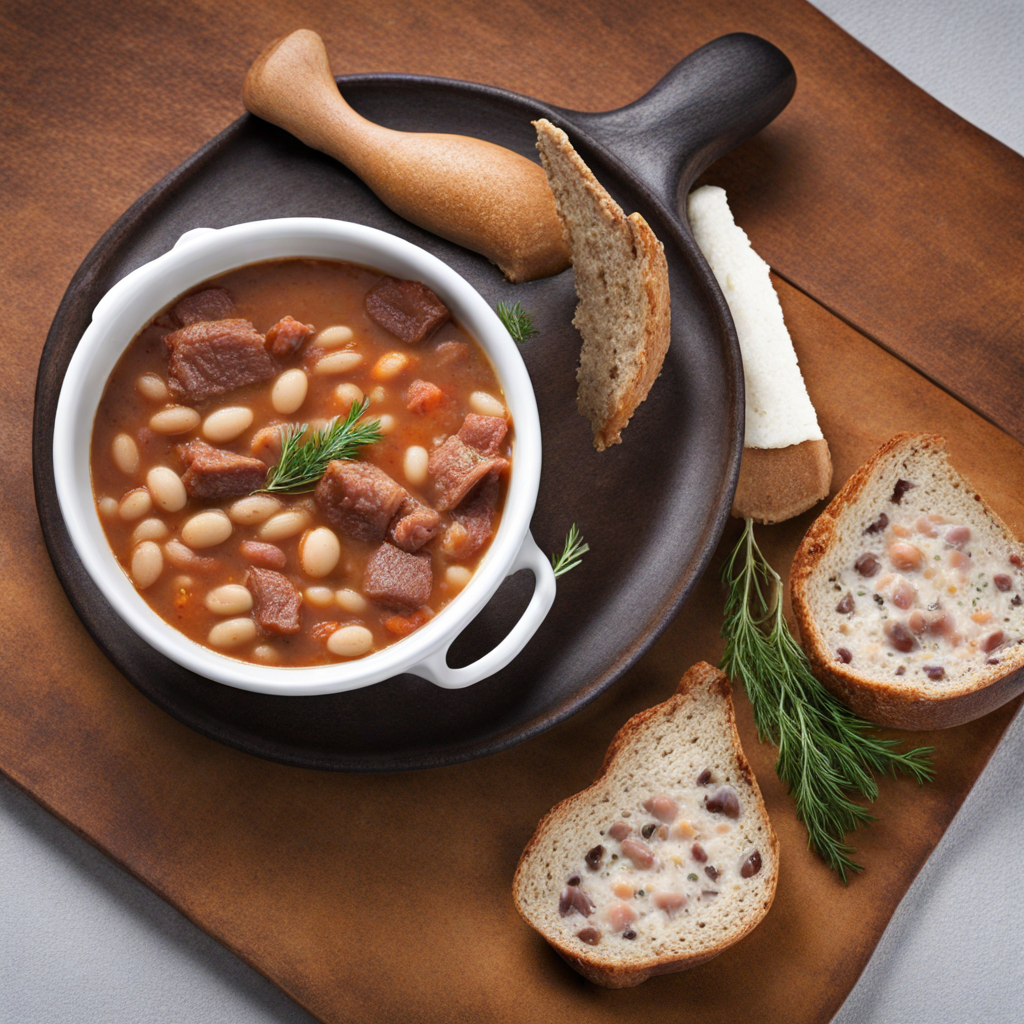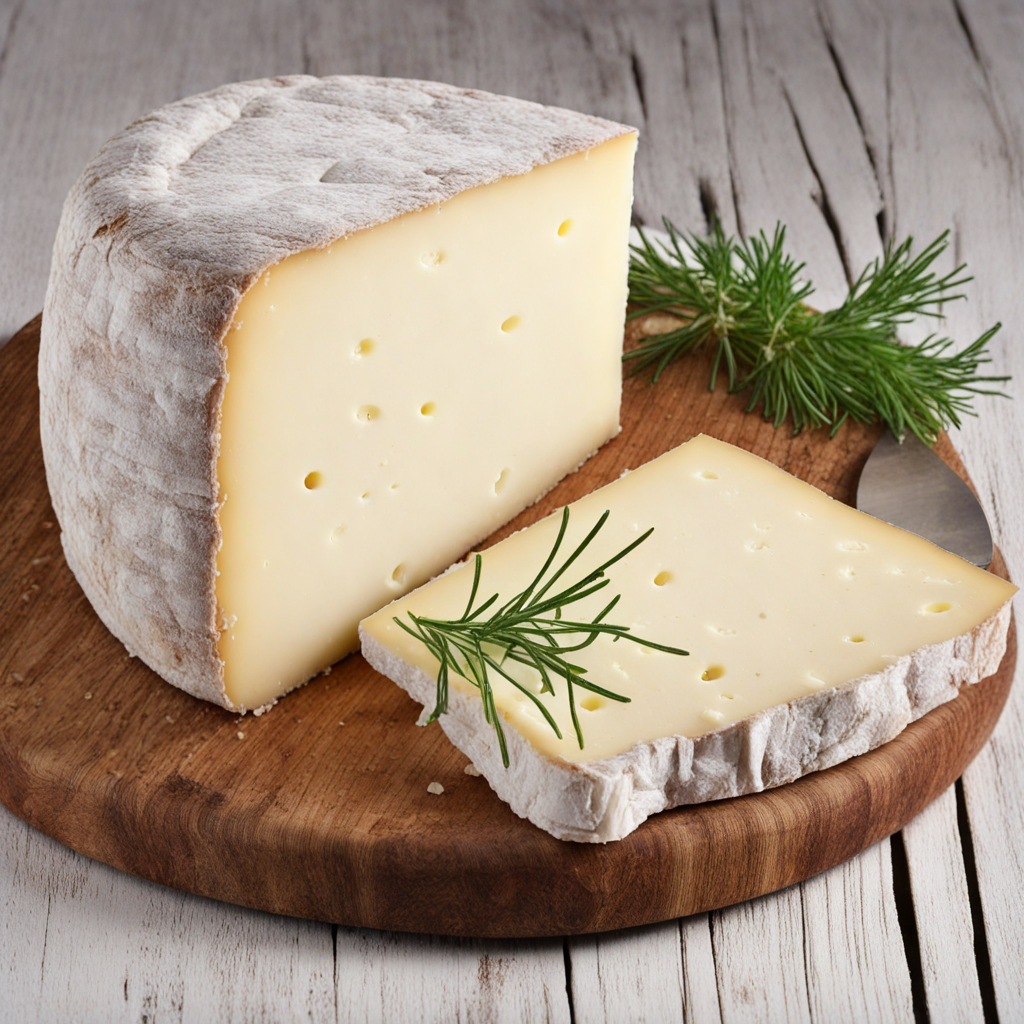Grah
Grah is a hearty and traditional dish from Bosnia and Herzegovina that showcases the rich flavors of the region. At its core, Grah is a bean stew, typically made with white or pinto beans that are slow-cooked to perfection. The beans are often combined with a variety of vegetables, such as carrots, onions, and bell peppers, which contribute to the stew's depth of flavor. A generous seasoning of smoked meat, like sausage or bacon, is usually added, giving the dish a robust and smoky taste that is both comforting and satisfying. The use of spices, particularly paprika, enhances the overall flavor profile, adding a subtle warmth and complexity that makes Grah a true delight for the senses. The preparation of Grah often involves a communal aspect, as it is a dish that brings families and friends together. It is commonly enjoyed during colder months, providing warmth and nourishment to those who partake in it. The long cooking time allows the ingredients to meld beautifully, resulting in a thick and creamy consistency that coats each bean. When served, Grah is often accompanied by crusty bread, perfect for soaking up the rich broth, and sometimes garnished with fresh parsley for a pop of color and freshness. Grah is more than just a meal; it is a reflection of Bosnian culture and hospitality. Each family may have their own variation of the dish, with some incorporating regional ingredients or personal touches that make it unique. Whether enjoyed at a family gathering, a festive occasion, or simply as a comfort food on a chilly day, Grah is a flavorful experience that invites you to explore the culinary heritage of Bosnia and Herzegovina. This dish not only satisfies hunger but also warms the heart, making it a must-try for anyone eager to discover new tastes and traditions.
How It Became This Dish
The History of Грах: A Culinary Icon of Bosnia and Herzegovina In the heart of the Balkans, nestled between the rugged mountains and lush valleys, lies Bosnia and Herzegovina—a land steeped in rich history and diverse cultural influences. One of the country’s cherished culinary staples is Грах, or pea soup, a dish that encapsulates the essence of Bosnian hospitality and tradition. This humble yet deeply flavorful dish has traversed centuries, reflecting the evolution of Bosnian culture, agricultural practices, and social structures. Origins of Грах The story of Грах begins with the common garden pea (Pisum sativum), which has been cultivated since ancient times. Archaeological evidence suggests that peas were among the first domesticated crops, dating back to around 7000 BCE in the Near East. As trade routes expanded, peas made their way across Europe, reaching the Balkans by the time of the Roman Empire. The fertile soil and temperate climate of Bosnia and Herzegovina provided ideal conditions for pea cultivation, allowing it to flourish. In the medieval period, Грах became more than just a food source; it evolved into an essential part of the Bosnian diet, particularly for the peasantry. The simplicity and affordability of peas made them an accessible source of nutrition. Dishes made from peas, including Грах, were often prepared in large quantities, allowing families to feed many mouths during the long winters when fresh produce was scarce. Cultural Significance Грах is not just a dish; it is a symbol of warmth and togetherness in Bosnian culture. Traditionally served as a communal meal, it brings families and friends together, especially during gatherings and festivities. The act of sharing Грах is often accompanied by stories, laughter, and a sense of belonging, reinforcing social bonds and cultural identity. In a country marked by a complex history of conflict and division, Грах has remained a unifying dish. It transcends ethnic boundaries, with variations found among Bosniaks, Croats, and Serbs. Each community has its own unique take on the recipe, incorporating local ingredients and flavors. For instance, Bosniaks might add smoked meat or sausage for richness, while Croats may infuse it with a touch of paprika, highlighting regional preferences and culinary artistry. Development Over Time As Bosnia and Herzegovina underwent various political and social transformations—from Ottoman rule to Austro-Hungarian influence, and later Yugoslavia—so did the preparation and consumption of Грах. During the Ottoman Empire, the introduction of spices and cooking techniques from the East enriched Bosnian cuisine. Pea soup began to incorporate a variety of seasonings, such as cumin and black pepper, elevating its flavor profile. In the late 19th and early 20th centuries, the Austro-Hungarian influence brought about a culinary renaissance in the region. The introduction of new cooking methods, culinary schools, and a focus on presentation transformed traditional dishes. Грах began to evolve from a rustic peasant meal to a dish that could be served in more refined settings. Restaurants in urban areas began to feature Грах on their menus, often accompanied by crusty bread or homemade cornbread. The tumultuous events of the 1990s, particularly the Bosnian War, had a profound impact on the food culture of the region. The war disrupted agricultural practices and forced many families to rely on whatever resources were available. In this challenging environment, Грах provided not just sustenance but also comfort—a reminder of home and normalcy amidst chaos. Families would gather to prepare this traditional dish, finding solace in the familiar flavors of their childhood. Modern-Day Грах Today, Грах remains a beloved dish in Bosnia and Herzegovina, celebrated for its simplicity and heartiness. It is often prepared in homes and featured in restaurants, serving as a testament to the resilience and creativity of the Bosnian people. Modern variations of Грах may include ingredients like carrots, potatoes, or herbs, showcasing the adaptability of the dish to contemporary tastes while honoring its roots. Moreover, the revival of traditional cooking methods has sparked an interest in preserving culinary heritage. Food festivals and cultural events across Bosnia and Herzegovina often highlight Грах, allowing younger generations to connect with their culinary traditions. Cooking classes and workshops are also gaining popularity, where participants learn to prepare this comforting dish, ensuring that the legacy of Грах endures. Conclusion Грах is more than just a dish; it is a culinary narrative that weaves together the past, present, and future of Bosnia and Herzegovina. From its origins as a staple crop in ancient times to its role as a symbol of community and resilience, Грах reflects the rich tapestry of Bosnian culture. As it continues to evolve, this simple pea soup remains a cherished part of the national identity, reminding us of the power of food to bring people together, nourish the soul, and celebrate shared heritage. Whether enjoyed on a cold winter’s day or at a festive gathering, Грах is a dish that embodies the warmth of Bosnian hospitality and the enduring spirit of its people.
You may like
Discover local flavors from Bosnia And Herzegovina







